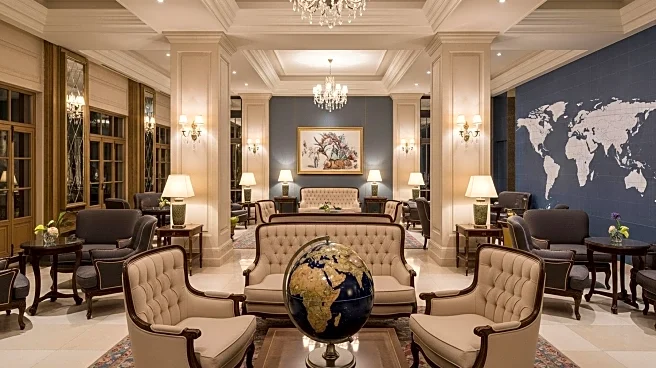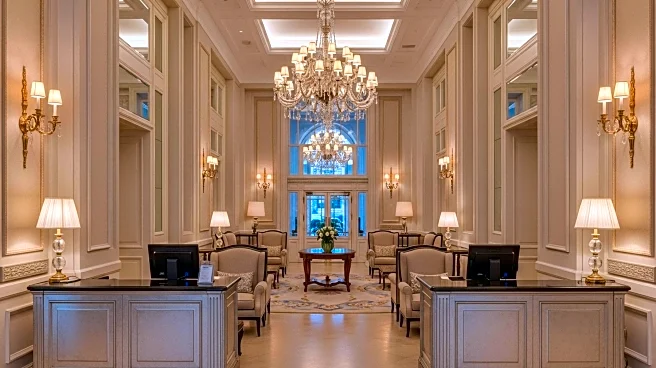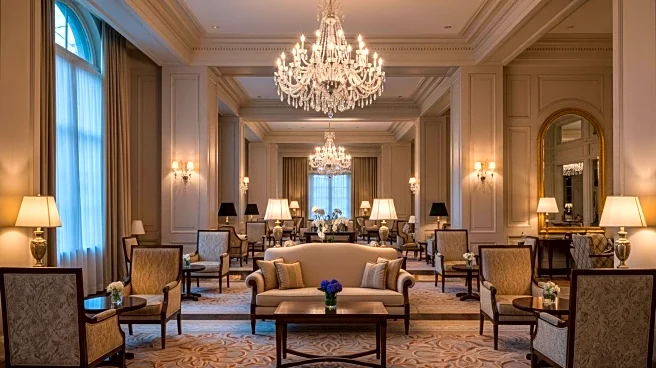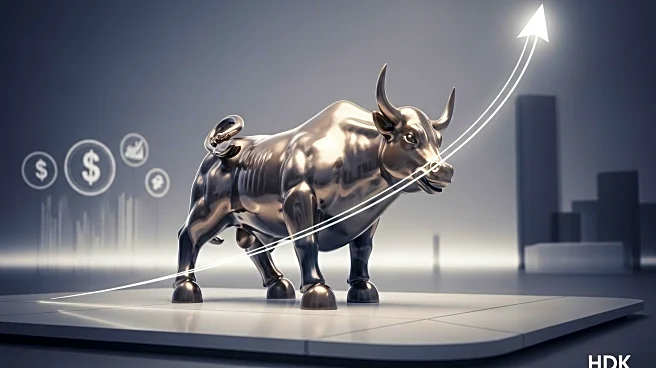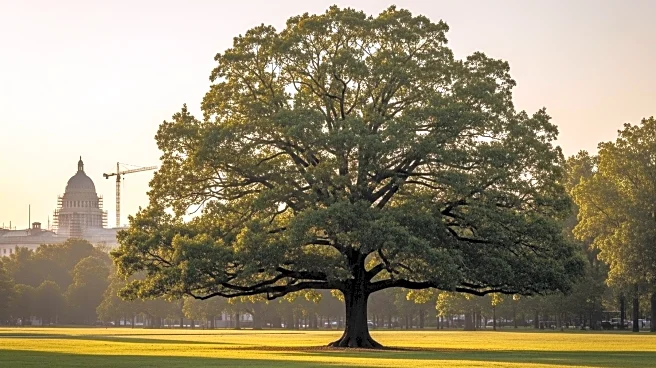What is the story about?
What's Happening?
The U.S. hotel industry is experiencing a challenging period as global tourism patterns shift. According to recent data, the U.S. hotel market's Revenue Per Available Room (RevPAR) growth forecast for 2025 has been significantly reduced to 0.1% from an earlier estimate of 1.8%. This adjustment comes amid a backdrop of declining occupancy rates, which have fallen for four consecutive months. The industry is grappling with several headwinds, including increased competition from alternative lodging options, persistent labor challenges, and rising operating costs. Additionally, the U.S. is facing economic pressures such as trade tensions, elevated interest rates, and geopolitical uncertainties, which have led to a downward revision of the country's GDP growth forecast for 2025 and 2026.
Why It's Important?
The current state of the U.S. hotel industry is significant as it reflects broader economic and tourism trends that could impact various stakeholders. The reduced RevPAR growth indicates potential financial strain for hotel operators, particularly those in lower-priced segments that previously benefited from specific demand spikes. The proliferation of alternative lodging options continues to pressure traditional hotel margins, suggesting a need for strategic adjustments in the industry. Moreover, the economic factors affecting the hotel sector, such as trade tensions and inflation, could have wider implications for the U.S. economy, influencing consumer spending and travel behavior. The industry's performance is a bellwether for the health of the broader travel and tourism sector, which is a critical component of the U.S. economy.
What's Next?
Looking ahead, the U.S. hotel industry is expected to face continued challenges over the next few quarters. Operators may need to focus on cost control and enhancing guest experiences to maintain competitiveness. The industry could see some relief from special events like the World Cup and the U.S.'s 250th birthday celebrations, which are anticipated to boost tourism. However, with construction and operating costs at all-time highs, the growth in hotel supply is expected to remain limited. The ongoing expansion of alternative lodging options will likely delay the next upcycle in the hotel market. Stakeholders will need to navigate these complexities while adapting to evolving consumer preferences and economic conditions.
Beyond the Headlines
The evolving landscape of the U.S. hotel industry highlights deeper implications for the sector's future. The rise of alternative lodging options underscores a shift in consumer preferences towards more flexible and diverse accommodation choices. This trend may prompt traditional hotels to innovate and diversify their offerings to remain competitive. Additionally, the industry's reliance on loyalty programs to buffer occupancy during challenging periods suggests a need for enhanced customer engagement strategies. The economic pressures facing the industry also raise questions about the sustainability of current business models and the potential need for regulatory adjustments to support long-term growth.
AI Generated Content
Do you find this article useful?
